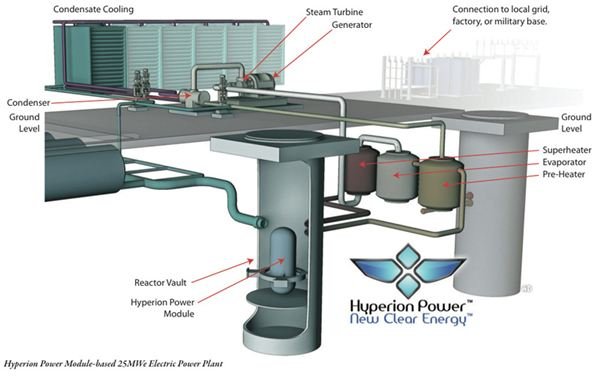WARNING – This is based on an article from 2013, so may no longer be relevant
NUCLEAR POWER..? Not exactly “green” energy, but micro-nuclear units are virtually non-polluting, occupy a tiny space, can operate for 20 years without maintenance before needing refuelling, and can be buried deep underground. Such small nuclear plants have been used since 1955 in more than 200 submarines and about 20 large aircraft-carriers, all without incident. If they can be safely used on the sea – the most hostile environment on earth – then they can surely be used on land.
All things considered they may be the best option for efficient energy independence.

‘Mini-nukes’ beat monster wind farms on every count
http://www.telegraph.co.uk/earth/energy/windpower/10389434/Mini-nukes-beat-monster-wind-farms-on-every-count.html
As the shambles of Britain’s energy policy and soaring bills continues to make shock headlines, many in the south-west of England are staring in angry amazement at plans by foreign-owned firms to build two of the largest offshore wind farms in the world just off their coastlines. The German power company RWE hopes to spend £4 billion on its “Atlantic Array”, covering 125 square miles of sea between Devon and South Wales with 240 vast 5MW turbines, more than 600ft high. Owing to the wind’s intermittency, these will generate, on average, just 400MW of electricity – but will earn RWE £525 million a year, of which £350 million will be from subsidies we all pay through our electricity bills.
Meanwhile, dominating the views from Dorset’s Jurassic Coast, Hampshire and the Isle of Wight, the £3.6 billion “Navitus Bay” scheme, proposed by the French state-owned firm EDF and a Dutch partner, will cover 76 square miles of sea with 218 5MW turbines generating an average of 350MW. It will be worth £450 million a year to its owners, £270 million of it in subsidies. In addition, locals are horrified to learn that to connect these turbines to the grid will involve 22 miles of cabling, in a trench up to 140ft wide across the New Forest and Dorset.
The combined contribution of these two gigantic wind farms, at a capital cost of £7.6 billion and earning subsidies of £620 million a year, will average 750MW – less than that of the single unsubsidised gas-fired power station recently built in Plymouth at a capital cost of £1 billion.
At the same time, George Osborne, the Chancellor, boasts of his hope that China will join EDF in financing a giant £14 billion nuclear power plant at Hinkley Point in Somerset, to generate 3,200MW of much more reliable CO2-free electricity –but at such colossal cost that its owners will be allowed to charge users almost double the £50 per megawatt-hour paid for power from gas or coal.
As we look on in mounting horror at the incredible crisis being created by our government’s insanely skewed “green” energy policies, it is time for a new ingredient to be inserted into the debate: the possibility of producing almost unlimited quantities of reliable, CO2-free electricity very much cheaper than that from those absurdly inefficient wind farms.
Two American firms, backed by the US Department of Energy, are now well advanced in developing factory-built “mini-nuclear power plants”, wholly safe and offering a mouthwatering range of advantages over their competitors. The mPower company in North Carolina is developing a two-reactor nuclear power station covering just 40 acres, but capable of generating 360MW round the clock: more than would be produced by the Navitus Bay wind farm at less than two-thirds of the price, and occupying only one 1,200th of the same area. These could be installed on old power station sites next to the grid, and the company tells me that they should be commercially available within nine or 10 years, much sooner than that monster at Hinkley Point.
A Colorado-based firm, Gen4 Energy (formerly Hyperion), is using Los Alamos technology to develop an even smaller nuclear generator, to produce 70MW of heat, to include 25MW of electricity. If we want efficient CO2-free electricity at competitive prices, this is where we should be looking. And anyone worried about the safety of siting these mini-reactors conveniently near to cities should remember that for 50 years, Rolls-Royce has been running a small nuclear reactor right next to Derby County football ground. As yet, not a single death has been reported.
Small modular mini-nuclear plants can produce 10-20MW electricity plus (like all thermal plants) waste-heat which can be captured and put to use in OA-Cities.
Aside from Hyperion there is Toshiba’s 4S (super-safe, small, simple) – http://www.nrc.gov/reactors/advanced/4s.html
